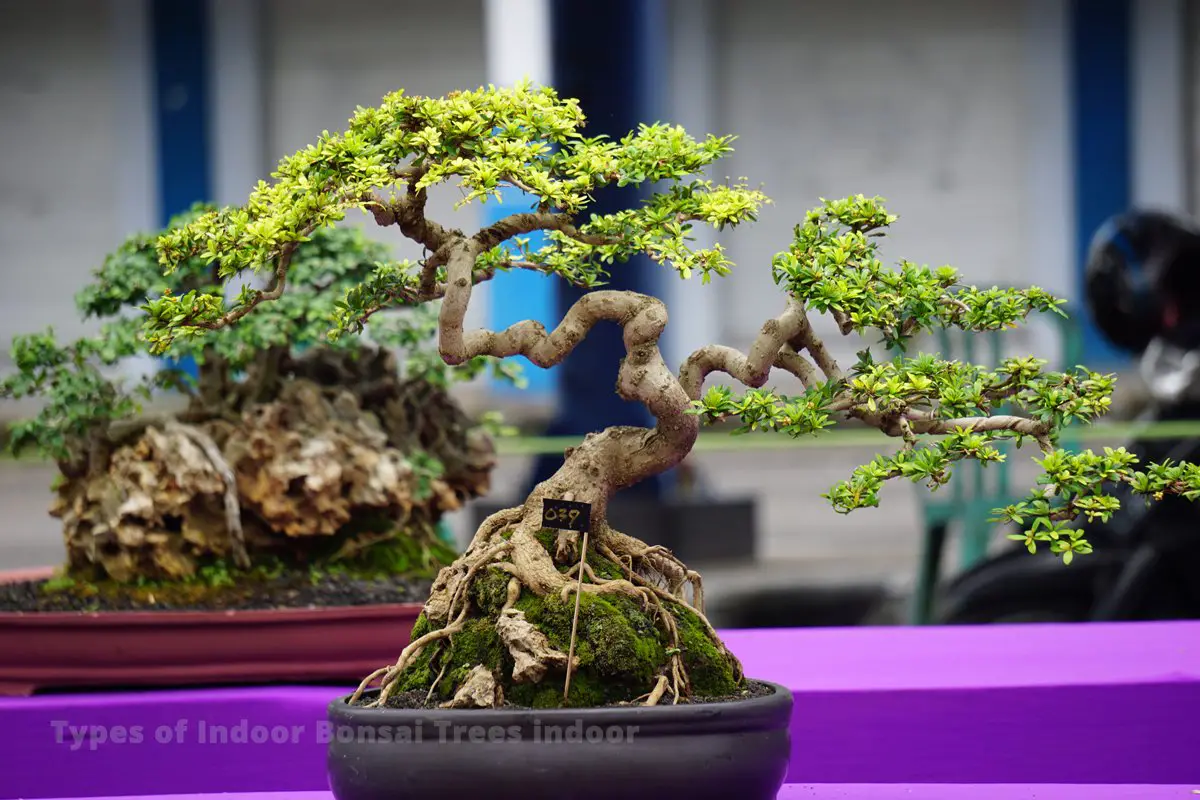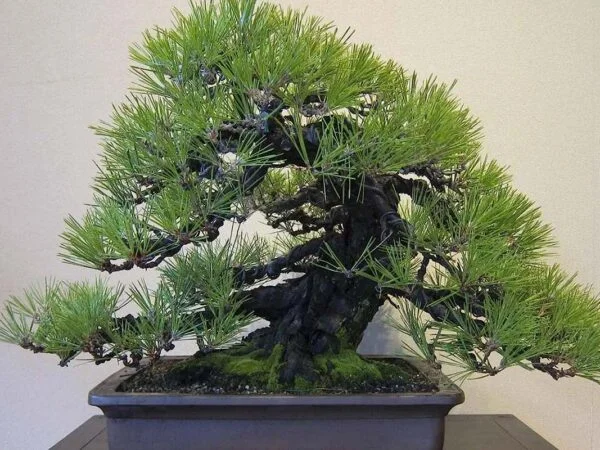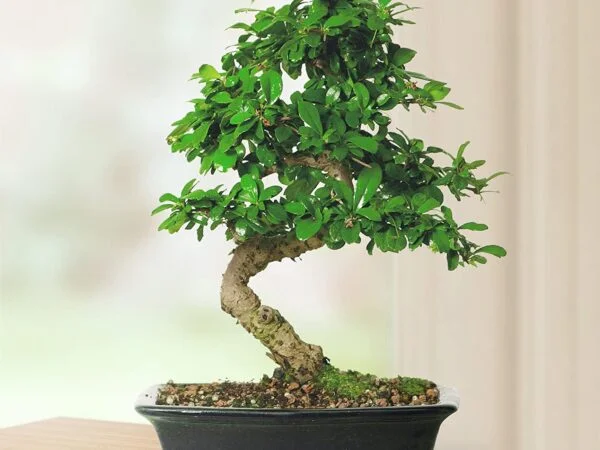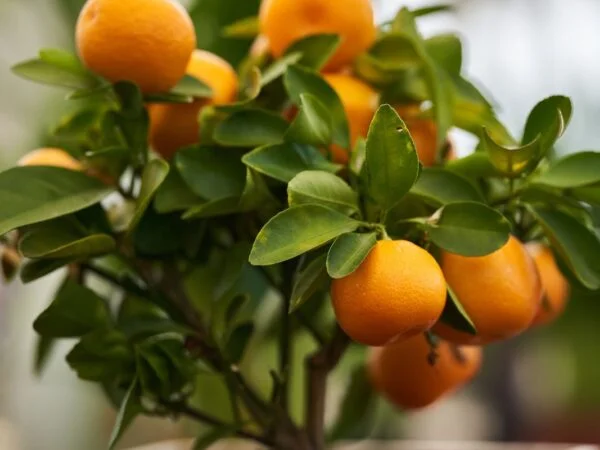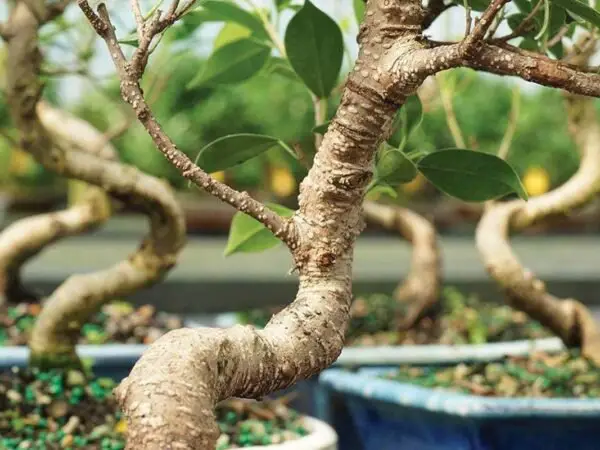Indoor bonsai trees offer a unique way to bring nature indoors, adding a touch of serenity and beauty to any space. Unlike outdoor bonsai, indoor bonsai trees are specially cultivated to thrive in indoor environments, making them perfect for those with limited outdoor space. In this guide, we'll explore the best types of bonsai trees for indoors, how to care for them, and tips to ensure they flourish.
What Are Indoor Bonsai Trees?
Definition: Indoor bonsai trees are miniature versions of larger tree species, designed to grow and thrive in an indoor environment. These trees are specially adapted to survive in less light and more stable temperatures than their outdoor counterparts.
Elaboration: Bonsai, meaning "planted in a container," is a Japanese art form that involves cultivating small trees to mimic the shape and scale of full-sized trees. Indoor bonsai trees are typically more tolerant of indoor conditions, such as lower light levels and less humidity. They are perfect for homes, offices, or any indoor setting where you want to bring a bit of nature indoors.
Examples:
- Ficus Bonsai: Known for its thick trunk and beautiful aerial roots, the Ficus is one of the most popular indoor bonsai trees. It is very forgiving and can thrive in various indoor conditions.
- Jade Bonsai (Crassula ovata): Also known as the money tree, the Jade bonsai is a succulent that can survive in dry indoor conditions. Its thick, fleshy leaves make it a unique choice for indoor bonsai enthusiasts.
- Chinese Elm (Ulmus parvifolia): The Chinese Elm is a versatile bonsai tree that adapts well to indoor environments. It has small, dense leaves and a naturally curved trunk, making it ideal for bonsai.
Tips for Growing Indoor Bonsai Trees:
- Light Requirements: Place your bonsai tree near a window that gets bright, indirect sunlight for at least 4-6 hours daily.
- Watering: Indoor bonsai trees need regular watering, but it's essential not to overwater. Allow the soil to dry slightly between watering sessions.
- Humidity: Many indoor bonsai trees prefer a higher humidity level. Use a humidity tray or mist the leaves regularly to maintain adequate moisture levels.
Table: Types of Indoor Bonsai Trees
| Bonsai Tree Type | Description | Light Requirements | Watering Needs | Special Care Notes |
|---|---|---|---|---|
| Ficus Bonsai | Thick trunk, aerial roots, adaptable to low light | Bright indirect sunlight | Water when soil is dry | Prune regularly to maintain shape |
| Jade Bonsai | Succulent leaves, drought-tolerant | Bright, indirect sunlight | Water sparingly | Avoid overwatering; can be propagated from cuttings |
| Chinese Elm Bonsai | Small, dense leaves, curved trunk | Bright indirect sunlight | Keep soil slightly moist | Can be shaped easily, repot every two years |
| Fukien Tea Bonsai | Tiny white flowers, glossy leaves | Bright indirect sunlight | Water regularly | Needs humidity, prone to pests like aphids and mites |
| Dwarf Schefflera Bonsai | Umbrella-like leaves, tropical appearance | Low to bright light | Moderate, let dry between | Prefers high humidity, prune to control growth |
Broadleaf Evergreens
Broadleaf evergreen species are a popular choice for indoor bonsai trees since they retain their leaves throughout the year. This provides a lush, green appearance, adding vibrancy to any indoor space. They are usually hardy and can adapt well to varying indoor conditions.
| Characteristics | Examples |
|---|---|
| Year-round foliage | Ficus, Chinese Elm, and Boxwood |
| Hardy and adaptable | Maintain moisture well |
| Requires regular pruning | Keeps shape and encourages growth |
There are 34 guides available for this category, making it easy to select the right species and learn how to care for it.
Deciduous Varieties
Deciduous tree species are another common option for indoor bonsai. These trees shed their leaves in the fall or during the dry season, offering a dynamic display throughout the year. During the growing season, they produce beautiful foliage, while the bare branches in winter provide a striking contrast.
| Characteristics | Examples |
|---|---|
| Seasonal leaf change | Maple, Oak, and Elm |
| Offers seasonal interest | Beautiful in all seasons |
| Requires dormant care | Special attention in winter |
Like broadleaf evergreens, there are 34 guides available for deciduous varieties, ensuring I can find comprehensive care instructions.
Pines and Conifers
Pines and conifers are characterized by their needle or scale-like foliage. These species are suitable for indoor cultivation and can provide a unique aesthetic with their distinctive shapes and textures. They are often chosen for their resilience and longevity.
| Characteristics | Examples |
|---|---|
| Needle-like foliage | Juniper, Pine, and Spruce |
| Often low maintenance | Tolerant of indoor conditions |
| Ideal for traditional bonsai styles | Can be styled into various forms |
This category has 15 guides available, which can help me understand how to nurture these trees effectively in an indoor environment.
By understanding these types of bonsai trees, I can make informed decisions about which ones to incorporate into my indoor space, enhancing both my home and my bonsai experience.
Popular Indoor Choices
When it comes to selecting types of bonsai trees indoor, there are several species that stand out for their beauty and ease of care. I have found that these particular options are some of the most popular choices for indoor bonsai enthusiasts.
Ficus Species
The Ficus bonsai is often considered the most common and easiest to care for indoor bonsai tree. This species is tolerant of low humidity and is very resilient, making it an excellent choice for beginners. Ficus varieties, such as Ficus retusa or ginseng ficus, can thrive year-round indoors, provided they receive plenty of light and warmer temperatures (HouseFresh).
| Ficus Variety | Characteristics |
|---|---|
| Ficus retusa | Resilient, tolerant of low humidity |
| Ginseng Ficus | Unique root structure, easy to shape |
Jade Tree
The Jade tree, scientifically known as Crassula ovata, is another popular choice for indoor bonsai. This succulent species is known for its thick, fleshy leaves and sturdy trunk. The Jade tree prefers bright light and can tolerate periods of drought, making it a low-maintenance option for bonsai lovers. It is also known for its ability to live for many years, often becoming a family heirloom.
| Jade Tree Characteristics | Details |
|---|---|
| Leaf Structure | Thick and fleshy |
| Watering Needs | Tolerates drought |
Hawaiian Umbrella
The Hawaiian umbrella tree, or Schefflera, is an attractive option for indoor bonsai that adds a unique touch to any space. With its glossy, umbrella-like leaves, it can grow well indoors if given adequate light and humidity. This species can also adapt to various lighting conditions, making it versatile for different home environments. Proper care will ensure that the Hawaiian umbrella remains healthy and vibrant.
| Hawaiian Umbrella Characteristics | Details |
|---|---|
| Leaf Appearance | Glossy, umbrella-like |
| Adaptability | Thrives in various lighting conditions |
By considering these popular indoor choices, I can create a beautiful and thriving bonsai collection in my home. Each species offers distinct characteristics and care requirements, making it easier to find the perfect fit for my indoor space.
Care Requirements
Caring for indoor bonsai trees requires attention to specific factors such as light, humidity, watering needs, and temperature. Each aspect plays a crucial role in ensuring the health and vitality of my bonsai trees.
Light and Humidity
Indoor bonsai trees have unique light requirements due to being planted in small pots with limited nutrient and water storage. The main challenge is replicating the light levels they are accustomed to in their natural habitat. Tropical bonsai trees, in particular, struggle with the lower intensity of light indoors. I often place my bonsai in front of a south-facing window to maximize natural light exposure.
To supplement the light deficit, I use artificial lighting with growth-friendly spectra for about 10 hours a day. This helps ensure that my bonsai receives adequate light throughout the day.
Humidity is another vital factor. Indoor bonsai may benefit from increased humidity, especially during winter months when indoor heating can dry out the air. I find that grouping my houseplants or placing a tray of water nearby helps raise humidity levels effectively. Additionally, higher watering frequency can counteract low humidity, but I always ensure not to overwater my plants.
| Light Requirement | Humidity Tips |
|---|---|
| 10 hours of artificial light per day | Group houseplants to increase humidity |
| Preferably south-facing window | Use a tray of water near plants |
Watering Needs
Watering is a critical aspect of bonsai care, as indoor bonsai trees are planted in small pots that can dry out quickly. It's essential for me to monitor the moisture level of the soil closely. I check the top layer of the soil regularly; if it feels dry, I know it’s time to water. Overwatering can lead to root rot, so I always ensure that the pots have proper drainage.
The frequency of watering can vary depending on factors like the species of bonsai, pot size, and environmental conditions. Generally, I find that watering once a week is a good starting point, but I adjust based on the plant's needs.
| Watering Frequency | Signs of Underwatering | Signs of Overwatering |
|---|---|---|
| Typically once a week | Drooping leaves | Yellowing leaves |
| Adjust based on plant needs | Dry soil | Root rot |
Temperature Considerations
Most indoor bonsai trees thrive in temperatures between 65 and 75 degrees Fahrenheit. I keep my bonsai within this range to promote healthy growth. If I choose to place my bonsai outdoors, I always protect it from extreme temperatures and strong winds. I bring it indoors when temperatures drop below 50 degrees to prevent cold damage.
| Ideal Temperature Range | Action Below 50°F |
|---|---|
| 65 - 75°F | Bring bonsai indoors |
| Protect from extreme temperatures | Ensure stability from winds |
By following these care requirements, I can enjoy healthy and thriving indoor bonsai trees that enhance my living space.
Growing Tips
Caring for my indoor bonsai trees requires attention to detail, particularly when it comes to pruning, fertilizing, and repotting. Here are some essential tips to keep my bonsai healthy and thriving.
Pruning and Wiring
Pruning is a vital part of maintaining the shape and health of my bonsai trees. It involves trimming branches and leaves to encourage growth in specific directions. Regular pruning helps achieve the desired aesthetic, resembling a much older tree while keeping it small (HouseFresh).
Wiring is another technique I use to guide the branches into my preferred shape. I wrap wire around the branches and gently bend them into position. It's essential to monitor the wiring closely to avoid damaging the bark, and I usually remove it after several months to let the tree maintain its new shape.
| Pruning Tips | Wiring Tips |
|---|---|
| Prune during the growing season | Use aluminum or copper wire |
| Remove dead or weak branches | Wire branches while still flexible |
| Trim leaves to promote growth | Monitor for bark indentation |
Fertilization Practices
Feeding my bonsai trees is crucial for their growth. I typically use a balanced fertilizer that is appropriate for the specific type of bonsai I have. During the growing season, I apply fertilizer every 4-6 weeks to provide the nutrients necessary for healthy growth.
I ensure to reduce fertilization during the winter months when the tree's growth slows down. It's important to follow the recommended dosage on the fertilizer package to avoid over-fertilizing, which can harm the tree.
| Fertilization Schedule | Type of Fertilizer |
|---|---|
| Every 4-6 weeks in spring and summer | Balanced NPK fertilizer (20-20-20) |
| Once in late fall before dormancy | Organic options like fish emulsion |
Repotting Guidelines
Repotting is essential for my bonsai trees to prevent root binding and to refresh the soil. Most bonsai benefit from repotting every 1-3 years, depending on their growth. I typically repot my deciduous trees in late winter or early spring, while evergreens are repotted in late spring.
Before repotting, I water the bonsai a day or two in advance. Moist soil makes it easier to remove the tree from its pot and reduces stress on the roots. For trees like the Chinese Elm, I ensure to repot every other summer or sooner if growth is significant (Bonsai Direct).
| Repotting Frequency | Best Time to Repot |
|---|---|
| Every 1-3 years | Late winter for deciduous |
| Sooner if pot bound | Late spring for evergreens |
By following these growing tips, I can maintain the beauty and health of my indoor bonsai trees, ensuring they thrive in my home environment.
Benefits of Indoor Bonsai
Bonsai trees offer various advantages that enhance both living spaces and my overall well-being. Here are some key benefits of having these miniature trees indoors.
Air Purification
One of the most significant benefits of indoor bonsai trees is their air-purifying capabilities. Bonsai trees are natural air purifiers, helping to improve indoor air quality by removing toxins and increasing oxygen levels. Species such as Ficus, Azalea, Juniper, Schefflera, and Dwarf Jade are particularly adept at filtering specific pollutants from the air (Hooked on Bonsai).
| Bonsai Species | Toxins Removed |
|---|---|
| Ficus | Formaldehyde |
| Azalea | Benzene |
| Juniper | Xylene |
| Schefflera | Trichloroethylene |
| Dwarf Jade | Carbon Monoxide |
These trees not only help in purifying the air but also contribute to creating micro-ecosystems within homes or offices by regulating humidity levels. This creates a conducive environment for other plants and indoor wildlife (Hooked on Bonsai).
Aesthetic Appeal
Bonsai trees are renowned for their aesthetic appeal. Their carefully pruned and maintained forms make them perfect for indoor spaces where room is limited. The art of bonsai reflects many of Japan's cultural characteristics, influenced by Zen Buddhism and Wabi-sabi, which emphasizes quiet simplicity and subdued refinement in Japanese art (Quora).
These miniature trees can serve as beautiful focal points in any room, adding a touch of nature and elegance. With their diverse shapes and sizes, bonsai trees can complement various interior design styles, making them a versatile choice for home decor.
Stress Relief
Having bonsai trees indoors can promote relaxation and improve mood and productivity. The act of caring for these trees can be therapeutic, helping me to unwind and connect with nature. Studies have shown that interacting with plants can have a positive impact on mental health, reducing feelings of stress and anxiety.
Moreover, the presence of greenery indoors has been linked to increased concentration and creativity. The calming effect of bonsai trees can create a peaceful ambiance, making them ideal companions for workspaces or meditation areas.
In summary, the benefits of indoor bonsai trees extend beyond mere decoration. They purify the air, enhance aesthetic appeal, and contribute to emotional well-being, making them a valuable addition to any home.
Common Mistakes
Maintaining indoor bonsai trees can be a rewarding experience, but there are common mistakes that can hinder their growth and health. I have learned that understanding these pitfalls is crucial for successful bonsai care.
Overwatering Issues
One of the most frequent mistakes I encounter is overwatering. Indoor bonsai trees are planted in small pots, which limits their capacity to store water and nutrients (Bonsai Empire). Unlike trees in the wild, which can access moisture through deep roots, bonsai depend entirely on me for their hydration. I must be careful not to saturate the soil, as this can lead to root rot and other problems.
| Watering Frequency | Signs of Overwatering |
|---|---|
| Every 1-2 weeks | Yellowing leaves |
| Soil remains soggy | Wilting despite wet soil |
| Foul smell from soil | Root decay |
Insufficient Light
Another common mistake is providing insufficient light. Tropical bonsai trees require intense light to thrive, yet indoor environments often have lower light levels compared to their natural habitats. To remedy this, I place my bonsai in bright locations, ideally near south-facing windows. Additionally, I use artificial lights with growth-friendly spectra for about 10 hours a day to supplement light deficiency (Bonsai Empire).
| Light Requirement | Recommended Action |
|---|---|
| Bright indirect light | Place near south-facing window |
| Low light | Use artificial grow lights for 10 hours daily |
Neglecting Humidity
Indoor bonsai trees often suffer from low humidity, particularly during winter when indoor heating dries the air. I have found that neglecting humidity can lead to stressed plants. To raise humidity levels, I group my bonsai with other houseplants or place a tray of water nearby. Increasing the watering frequency can also help, but I must be cautious to avoid overwatering.
| Humidity Level | Improvement Methods |
|---|---|
| Low humidity | Group plants together |
| Dry indoor air | Place a tray of water near bonsai |
By being aware of these common mistakes, I can better care for my indoor bonsai trees, ensuring they remain healthy and vibrant.
Final Thoughts on Types of Bonsai Trees for Indoors
Indoor bonsai trees offer a beautiful and calming addition to any indoor space. With various types to choose from, there's a bonsai for every style and level of experience. Whether you're looking for a tree that's easy to care for or something more challenging, indoor bonsai trees provide an opportunity to connect with nature in a meaningful way. Remember to consider light, water, and humidity needs when choosing your bonsai, and enjoy the process of cultivating your miniature tree.
FAQs about Types of Bonsai Trees for Indoors
Q: What are the easiest indoor bonsai trees for beginners?
A: For beginners, the Ficus Bonsai and Jade Bonsai are excellent choices. The Ficus is forgiving and adaptable to various indoor conditions, while the Jade Bonsai, being a succulent, requires less frequent watering and is relatively low maintenance.
Q: How much light do indoor bonsai trees need?
A: Indoor bonsai trees typically need bright, indirect sunlight for about 4-6 hours a day. Positioning them near a window that receives plenty of light is ideal. Some types, like the Dwarf Schefflera, can tolerate lower light conditions, but most will thrive best with ample sunlight.
Q: How do I water my indoor bonsai tree?
A: Watering needs vary by species, but generally, you should water your bonsai tree when the top inch of soil feels dry. Avoid overwatering, which can lead to root rot. A good practice is to water thoroughly, allowing excess water to drain out of the pot.
Q: Can I keep my indoor bonsai tree outside?
A: Some indoor bonsai trees can be placed outside during warmer months, but it's essential to transition them slowly to prevent shock. Start by placing them in a shaded area and gradually introduce them to more light. Ensure they are not exposed to harsh weather conditions like strong winds or heavy rain.
Q: How do I increase humidity for my indoor bonsai tree?
A: Increasing humidity can be done by placing a humidity tray filled with water under the bonsai pot or misting the leaves regularly. Grouping plants together or using a humidifier can also help maintain a suitable humidity level for your bonsai.
Q: What is the best way to prune an indoor bonsai tree?
A: Pruning is essential to maintain the shape and size of your bonsai. Use sharp, clean shears to trim new growth and remove any dead or damaged branches. Regular pruning encourages healthy growth and helps develop the desired bonsai shape. Each bonsai species may require specific pruning techniques, so it's best to research your particular tree.
Image Source: Paid image from CANVA

